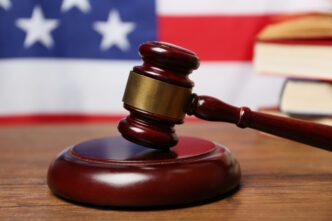The passing of a pope triggers a time-honored process steeped in tradition, involving the sacred responsibilities of cardinals who elect the next leader of the Catholic Church. This centuries-old ritual includes a series of confidential ballots, meticulously counted and then pierced with a needle and thread before being burned to produce either white or black smoke, signaling the election outcome to the world’s 1.3 billion Catholics. Held in the Sistine Chapel amidst strict secrecy, cardinals are prohibited from communicating any details of the voting process beyond its frescoed walls.
Following the death of a pope—referred to as “sede vacante” or “vacant See”—the camerlengo, or chamberlain, confirms the pontiff’s death and secures the papal apartment. This role, currently held by Cardinal Kevin Farrell, involves managing the Holy See’s administrative and financial matters until a new pope is appointed. When a pope passes, most Vatican prefects lose their positions, although a few, such as the foreign minister and the master of liturgical ceremonies, remain in their posts to aid in organizing the conclave. Cardinal Giovanni Battista Re, the dean of the College of Cardinals, is responsible for summoning the cardinals for the funeral and presiding over the Mass before the conclave’s commencement. In his recent reforms, Pope Francis simplified the funeral rites and expressed his wish to be buried at St. Mary Major Basilica, emphasizing his identity as a bishop among bishops.
Upon the pope’s death, a series of events follows, including death confirmation at the pontiff’s residence, the transfer of the coffin to St. Peter’s Basilica for public viewing, a funeral Mass, and burial, which occurs between the fourth and sixth day posthumously. Nine days of official mourning, known as “novendiali,” ensue, during which cardinals gather in Rome. The conclave, where the new pope is elected, must start 15 to 20 days after “sede vacante” is declared, although an earlier commencement is possible if the cardinals agree.
Only cardinals under the age of 80 are eligible to vote in the papal election, with the number of electors capped at 120. Currently, 136 cardinals are eligible, but this number could change before the conclave begins. Those over 80 may engage in pre-conclave discussions, or general congregations, to address church issues. Such meetings have historically shaped papal elections, as demonstrated by Cardinal Jorge Mario Bergoglio’s influential remarks before his election as Pope Francis.
While any baptized Roman Catholic male can theoretically become pope, since 1378, the role has been filled exclusively by cardinals. Leading contenders include Cardinal Pietro Parolin of Italy, Cardinal Marc Ouellet of Canada, Cardinal Christoph Schoenborn of Austria, Cardinal Luis Tagle of the Philippines, and Cardinal Matteo Zuppi of Italy.
The election process is conducted within the Sistine Chapel, beginning with an initial ballot after the opening Mass. If no candidate secures a two-thirds majority, the voting continues with two ballots each morning and afternoon. Votes are written on rectangular papers with the inscription “Eligo in Summum Pontificem” (“I elect as supreme pontiff”). After filling out their ballots, cardinals pronounce an oath before depositing them for counting. The ballots undergo verification by scrutineers, and results are declared after each round. Should no candidate emerge victorious, the ballots are sewn together, a new round is prepared, and another vote occurs. Recent amendments by Pope Benedict XVI mandate a two-thirds majority for election, eliminating the possibility of electing a pope by simple majority.
Secrecy is paramount in the conclave. Violators face automatic excommunication, with explicit oaths forbidding discussion or recording of the proceedings. Cardinals themselves face excommunication only if proven to have accepted bribes, allowed external influence, or formed alliances.
The selection of a new pope is announced through the burning of ballots. Black smoke indicates no decision, while white smoke, aided by chemical cartridges for clarity, signifies the election of a pope. Bells also toll to confirm the decision, culminating in the introduction of the new pope from St. Peter’s Square, followed by his first blessing. The announcement, “Habemus Papam!” (“We have a pope!”), marks the beginning of a new papal era.






